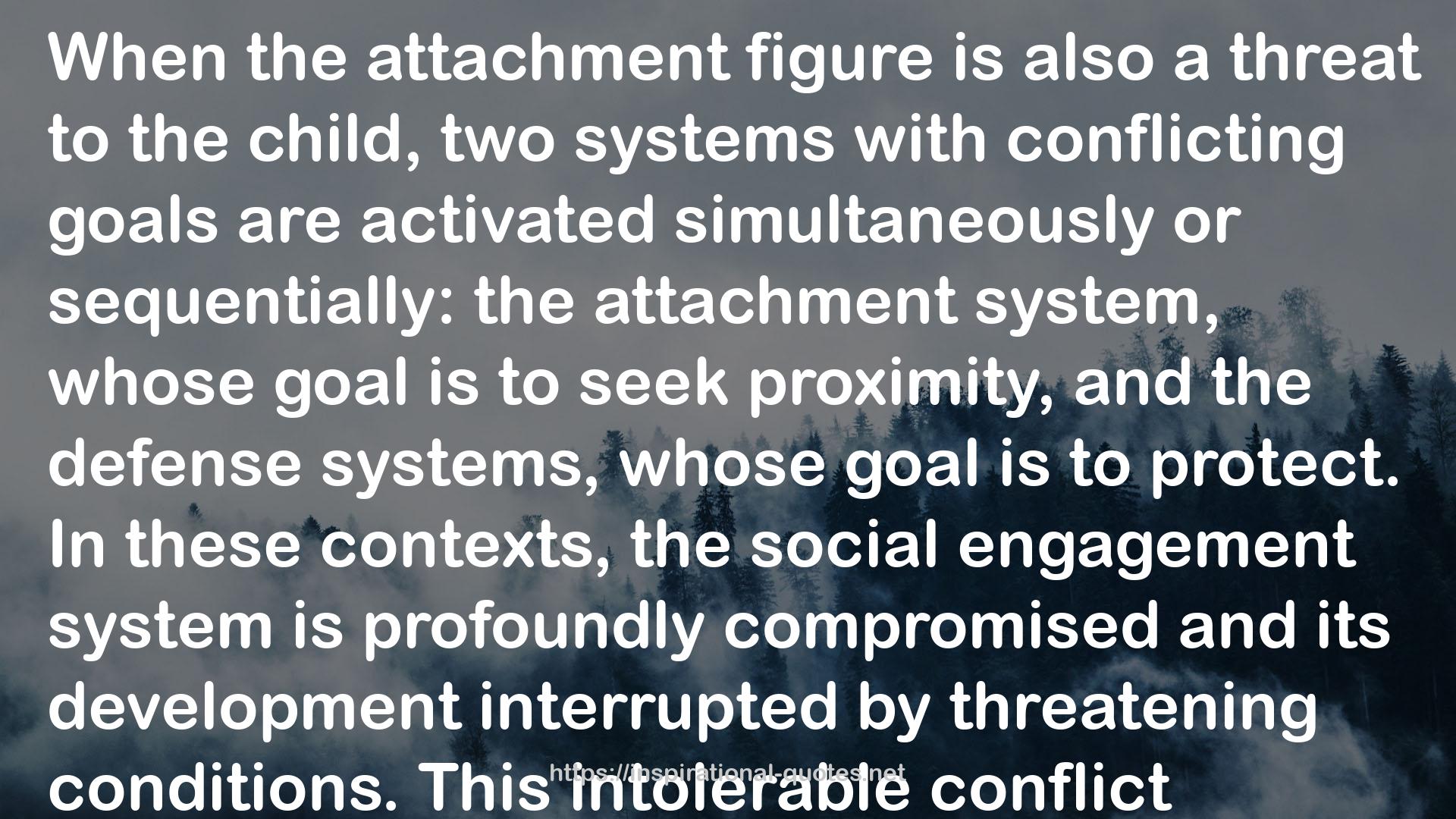" When the attachment figure is also a threat to the child, two systems with conflicting goals are activated simultaneously or sequentially: the attachment system, whose goal is to seek proximity, and the defense systems, whose goal is to protect. In these contexts, the social engagement system is profoundly compromised and its development interrupted by threatening conditions. This intolerable conflict between the need for attachment and the need for defense with the same caregiver results in the disorganized–disoriented attachment pattern (Main & Solomon, 1986). A contradictory set of behaviors ensues to support the different goals of the animal defense systems and of the attachment system (Lyons-Ruth & Jacobvitz, 1999; Main & Morgan, 1996; Steele, van der Hart, & Nijenhuis, 2001; van der Hart, Nijenhuis, & Steele, 2006). When the attachment system is stimulated by hunger, discomfort, or threat, the child instinctively seeks proximity to attachment figures. But during proximity with a person who is threatening, the defensive subsystems of flight, fight, freeze, or feigned death/shut down behaviors are mobilized. The cry for help is truncated because the person whom the child would turn to is the threat. Children who suffer attachment trauma fall into the dissociative–disorganized category and are generally unable to effectively auto- or interactively regulate, having experienced extremes of low arousal (as in neglect) and high arousal (as in abuse) that tend to endure over time (Schore, 2009b). In the context of chronic danger, patterns of high sympathetic dominance are apt to become established, along with elevated heart rate, higher cortisol levels, and easily activated alarm responses. Children must be hypervigilantly prepared and on guard to avoid danger yet primed to quickly activate a dorsal vagal feigned death state in the face of inescapable threat. In the context of neglect, instead of increased sympathetic nervous system tone, increased dorsal vagal tone, decreased heart rate, and shutdown (Schore, 2001a) may become chronic, reflecting both the lack of stimulation in the environment and the need to be unobtrusive. "
― , Sensorimotor Psychotherapy: Interventions for Trauma and Attachment
